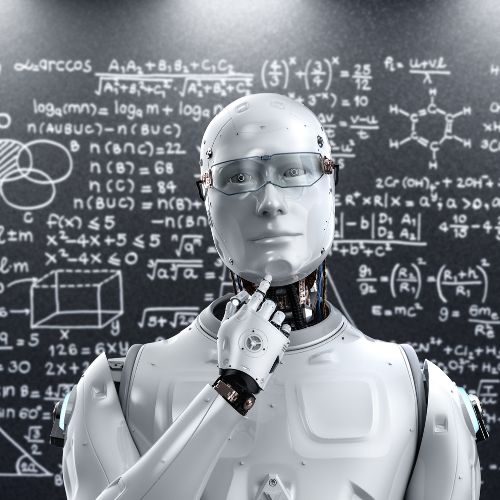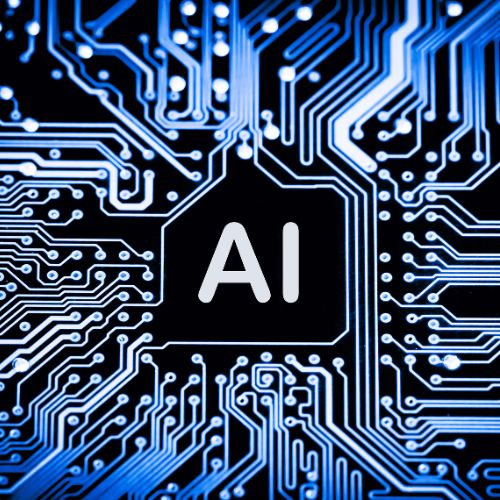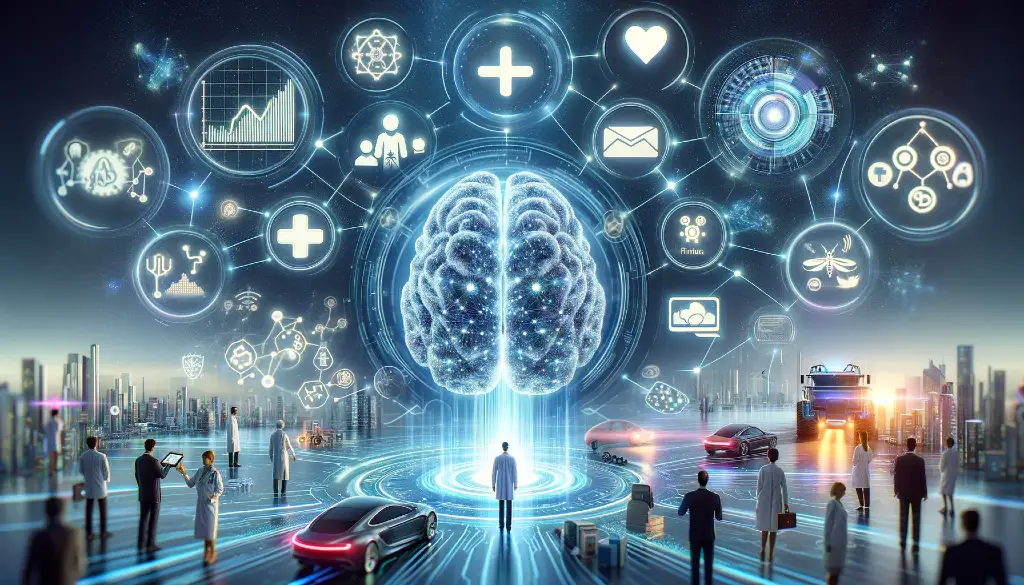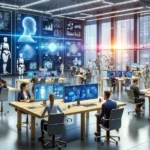Introduction
In a world where artificial intelligence (AI) is becoming increasingly prevalent, one question looms large: how do machines make decisions? As technology advances, the line between human and machine intelligence blurs, raising fascinating questions about the nature of decision-making and cognition. Join us on a journey to uncover the inner workings of AI decision-making and explore how machines harness human-like intelligence to navigate complex tasks and challenges.
From machine learning algorithms to cognitive computing and artificial neural networks, the realm of AI decision-making holds boundless possibilities and promises to reshape our understanding of intelligence itself. So, fasten your seatbelts and prepare to dive deep into the fascinating world of AI decision-making, where human-like intelligence meets cutting-edge technology.
Understanding AI Decision-Making
AI decision-making is a complex and multifaceted process that draws inspiration from human cognition while leveraging advanced algorithms and computational techniques. At its core, AI decision-making involves the analysis of data, the extraction of patterns and insights, and the generation of informed choices or actions. Here’s a closer look at the key components and principles of AI decision-making:
- Data Analysis: AI decision-making begins with the collection and analysis of data from various sources. This data may include structured data such as numerical values and categorical variables, as well as unstructured data such as text, images, and videos. Through techniques such as data preprocessing, feature extraction, and dimensionality reduction, AI systems extract relevant information from raw data to inform decision-making.
- Machine Learning Algorithms: Machine learning algorithms play a central role in AI decision-making, enabling systems to learn from data and improve performance over time. Supervised learning algorithms, such as decision trees and neural networks, learn from labeled examples to make predictions or classifications. Unsupervised learning algorithms, such as clustering and dimensionality reduction, identify patterns and structures in data without explicit supervision. Reinforcement learning algorithms learn through trial and error, receiving feedback from the environment to optimize decision-making strategies.
- Cognitive Computing: Cognitive computing is a subset of AI that seeks to emulate human cognitive processes, such as perception, reasoning, and decision-making. By combining techniques from artificial intelligence, neuroscience, and cognitive psychology, cognitive computing systems aim to mimic human-like intelligence and behavior. These systems often incorporate elements such as natural language processing, computer vision, and knowledge representation to enable more human-like interactions and decision-making.
- Artificial Neural Networks: Artificial neural networks (ANNs) are computational models inspired by the structure and function of the human brain. These networks consist of interconnected nodes, or neurons, organized into layers and trained to perform specific tasks, such as classification, regression, or pattern recognition. Deep neural networks, in particular, have shown remarkable success in a wide range of AI applications, including image recognition, natural language processing, and autonomous driving.
By understanding the principles and techniques underlying AI decision-making, we can gain insights into how machines harness human-like intelligence to analyze data, extract patterns, and make informed choices or actions.
The Role of Machine Learning Algorithms
Machine learning algorithms are the backbone of AI decision-making, empowering systems to learn from data, extract patterns, and make predictions or decisions without explicit programming. These algorithms play a crucial role in enabling AI systems to adapt and improve over time, leading to more accurate and effective decision-making processes. Here’s a closer look at the role of machine learning algorithms in AI decision-making:
- Learning from Data: Machine learning algorithms learn from data by identifying patterns, relationships, and structures within the data. Through a process called training, these algorithms analyze labeled or unlabeled examples to extract features and learn the underlying patterns that characterize different classes or categories. By iteratively adjusting their parameters based on feedback from the data, machine learning algorithms optimize their performance and generalize to new, unseen data.
- Classification and Prediction: One of the primary tasks of machine learning algorithms is classification, where the goal is to assign input data points to predefined categories or classes. Classification algorithms, such as logistic regression, support vector machines, and neural networks, learn decision boundaries that separate different classes in the input space. Similarly, prediction algorithms, such as regression and time series forecasting, learn to predict continuous or discrete values based on input features.
- Clustering and Pattern Recognition: In addition to classification and prediction, machine learning algorithms are used for clustering and pattern recognition tasks. Clustering algorithms, such as k-means and hierarchical clustering, group similar data points together based on their features, enabling the discovery of hidden structures within the data. Pattern recognition algorithms, such as association rule mining and frequent pattern mining, identify recurring patterns or associations in large datasets, revealing insights and relationships that may not be apparent at first glance.
- Feature Engineering and Dimensionality Reduction: Machine learning algorithms often rely on feature engineering and dimensionality reduction techniques to improve performance and efficiency. Feature engineering involves selecting, transforming, or creating new features from the raw data to enhance the predictive power of the model. Dimensionality reduction techniques, such as principal component analysis (PCA) and t-distributed stochastic neighbor embedding (t-SNE), reduce the dimensionality of the input space while preserving the most relevant information, leading to more compact and interpretable representations.
By leveraging machine learning algorithms, AI systems can analyze vast amounts of data, extract meaningful insights, and make informed decisions or predictions. These algorithms enable AI systems to adapt to changing environments, learn from experience, and continuously improve their performance, making them indispensable tools in the realm of AI decision-making.
Cognitive Computing and Artificial Neural Networks
Cognitive computing and artificial neural networks (ANNs) are two powerful frameworks that drive AI decision-making closer to human-like intelligence. While cognitive computing seeks to emulate human thought processes and reasoning, artificial neural networks are inspired by the structure and function of the human brain. Here’s a closer look at these two approaches and their role in AI decision-making:
- Cognitive Computing: Cognitive computing is a branch of AI that aims to simulate human cognitive processes, such as perception, reasoning, and decision-making. Unlike traditional rule-based systems, cognitive computing systems learn and adapt from experience, allowing them to handle complex, unstructured data and tasks with uncertainty and ambiguity. These systems often incorporate elements such as natural language processing, machine learning, and knowledge representation to enable more human-like interactions and decision-making.
- Artificial Neural Networks (ANNs): Artificial neural networks are computational models inspired by the structure and function of biological neural networks in the human brain. These networks consist of interconnected nodes, or neurons, organized into layers and trained to perform specific tasks, such as classification, regression, or pattern recognition. ANNs learn from data through a process called supervised learning, where labeled examples are used to adjust the network’s parameters and optimize its performance. Deep neural networks, in particular, have shown remarkable success in a wide range of AI applications, including computer vision, natural language processing, and reinforcement learning.
- Applications in AI Decision-Making: Cognitive computing and artificial neural networks play complementary roles in AI decision-making, each offering unique strengths and capabilities. Cognitive computing systems excel at tasks that require human-like reasoning and understanding, such as natural language understanding, sentiment analysis, and contextual understanding. These systems leverage machine learning algorithms and knowledge representation techniques to interpret and analyze unstructured data, enabling more nuanced and contextually relevant decision-making.
Artificial neural networks, on the other hand, excel at tasks that involve pattern recognition, classification, and prediction. These networks learn complex relationships and structures within the data, allowing them to make accurate predictions or classifications based on input features. By combining cognitive computing and artificial neural networks, AI systems can leverage the strengths of both approaches to achieve more human-like intelligence and decision-making capabilities.


Applications of AI Decision-Making
Examining real-world applications of AI decision-making provides valuable insights into how this technology is transforming industries and driving innovation. Here are several compelling case studies showcasing the diverse applications and benefits of AI decision-making:
- Healthcare Diagnosis: AI decision-making is revolutionizing healthcare by enabling more accurate and efficient diagnosis of diseases. For example, IBM’s Watson for Oncology utilizes AI algorithms to analyze patient data and medical literature, assisting oncologists in determining personalized treatment plans for cancer patients. By leveraging AI decision-making, healthcare providers can improve patient outcomes and reduce the burden on medical professionals.
- Financial Trading: In the financial sector, AI decision-making is used to analyze market trends, identify investment opportunities, and optimize trading strategies. Quantitative trading firms such as Renaissance Technologies employ AI algorithms to analyze vast amounts of financial data and make high-frequency trading decisions in real-time. By leveraging AI decision-making, financial traders can gain a competitive edge and achieve superior returns on investment.
- Autonomous Vehicles: AI decision-making plays a crucial role in enabling autonomous vehicles to perceive and navigate the world around them. Companies like Tesla and Waymo use AI algorithms to process sensor data, identify objects, and make driving decisions in real-time. By harnessing AI decision-making, autonomous vehicles can navigate complex environments safely and efficiently, paving the way for a future of self-driving transportation.
- Manufacturing Optimization: In the manufacturing industry, AI decision-making is used to optimize production processes, improve quality control, and reduce downtime. For example, General Electric (GE) utilizes AI algorithms to analyze sensor data from industrial equipment and predict maintenance needs before failures occur. By leveraging AI decision-making, manufacturers can increase productivity, reduce costs, and enhance overall efficiency.
- Customer Service Automation: AI decision-making is transforming customer service by automating repetitive tasks, improving response times, and enhancing customer satisfaction. Chatbots powered by AI algorithms, such as those deployed by companies like Amazon and Google, can understand natural language queries, provide personalized assistance, and resolve customer issues autonomously. By leveraging AI decision-making, organizations can streamline customer service operations and deliver a seamless experience to their customers.
These case studies highlight the diverse applications and benefits of AI decision-making across industries. By harnessing the power of AI algorithms, organizations can unlock new opportunities, optimize processes, and achieve their business objectives more effectively.
Future Directions and Opportunities
Looking ahead, the future of AI decision-making holds exciting possibilities and opportunities for innovation. As AI algorithms continue to evolve and become more sophisticated, we can expect to see advancements in areas such as explainable AI, robustness to adversarial attacks, and autonomous decision-making systems.
Furthermore, the integration of AI decision-making into everyday applications and processes will unlock new avenues for automation, optimization, and personalized experiences. With ongoing research and development efforts, AI decision-making has the potential to revolutionize industries, transform the way we work and live, and drive the next wave of technological progress.
As we embrace these future directions and opportunities, it’s essential to prioritize ethical considerations, transparency, and responsible deployment of AI decision-making systems to ensure their positive impact on society and the economy.
Conclusion
In conclusion, the realm of AI decision-making represents a convergence of human-like intelligence and cutting-edge technology, reshaping industries, and pushing the boundaries of what’s possible. As we’ve explored the principles, applications, and future directions of AI decision-making, it’s clear that this technology has the potential to revolutionize the way we perceive, interact with, and harness information. From healthcare to finance, transportation to manufacturing, AI decision-making is driving innovation, improving efficiency, and empowering organizations to make better, more informed decisions.
At the forefront of this transformative wave is Verdict, an AI-enhanced web search platform that leverages advanced algorithms to deliver personalized and relevant search results. By harnessing the power of AI decision-making, Verdict enables users to access information quickly, efficiently, and accurately, empowering them to make informed choices and drive meaningful outcomes.
Whether you’re a researcher seeking the latest insights or a business owner looking to stay ahead of the competition, Verdict provides the tools and resources you need to navigate the vast landscape of information with ease. Join us on this journey of discovery and innovation, and together, let’s harness the power of AI decision-making to unlock new possibilities and shape the future of artificial intelligence.










